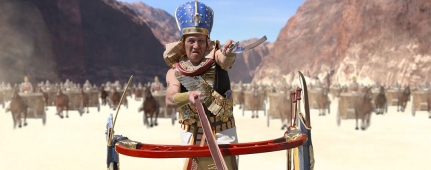Daniel 5:31—How can the Book of Daniel be inspired if it makes reference to a man that modern scholarship says never existed?
Problem: According to Daniel 5:31, the kingdom of Belshazzar fell to the invading armies, and Darius the Mede took over as king. However, modern scholars have rejected the historical accuracy of the Book of Daniel. They argue that there never was a Darius the Mede, since there is no mention of such a person in ancient documents. Is this an error in Daniel’s historical account?
Solution: Like the historical record of Belshazzar, which modern scholars questioned until archaeological evidence vindicated Daniel’s accuracy, Daniel has again recorded the existence of a man that other ancient historical documents omit.
Some modern scholars claim that the author of Daniel mistakenly thought that the Medes conquered Babylon instead of the Persians. They claim that this author then confused Darius I, king of Persia (521–486 b.c.) with the conqueror of Babylon and identified this figure as Darius the Mede. However, there is no reason to assume that the Book of Daniel is in error. Darius the Mede is a different person from Darius I of Persia. Darius the Mede was a subordinate to Cyrus the Great. Cuneiform texts refer to Darius the Mede as Gubaru who was appointed by Cyrus to be governor over all of Babylonia. The tendency to deny the historical accuracy of Daniel simply because there is currently no corroborating historical information stems from the antisupernatural bias of modern scholarship. Daniel’s historical record has proven to be a reliable source of information.
See All Problems
This excerpt is from When Critics Ask: A Popular Handbook on Bible Difficulties (Wheaton, Ill.: Victor Books, 1992). © 2014 Norman Geisler and Thomas Howe. All rights reserved. Used by permission. Click here to purchase this book.














